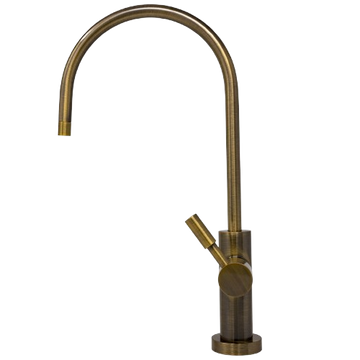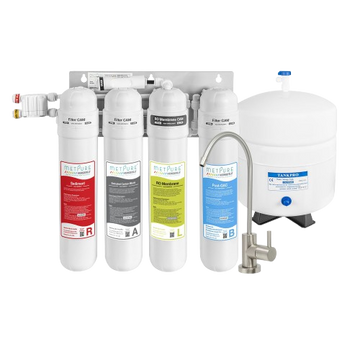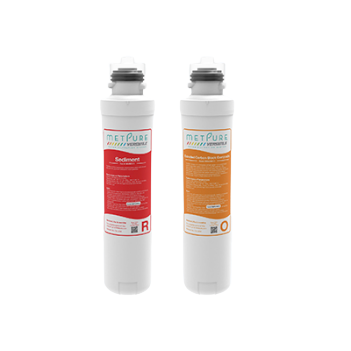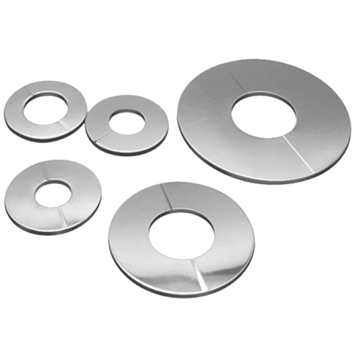When it comes to ensuring the safety and quality of your drinking water, understanding which contaminants your filter can remove is crucial. Water filters are designed to eliminate harmful substances that can affect your health and the taste of your water. Below, we’ve outlined 15 common water contaminants that a high-quality water filter can effectively remove, helping you decide about your water filtration needs.
Learn more about the Top 10 Benefits of Drinking Filtered Water
1. Chlorine
Chlorine is commonly used to disinfect water but can leave an unpleasant taste and odor. Water filters with activated carbon can effectively remove chlorine, improving the taste and smell of your water.
2. Lead
Lead is a toxic heavy metal that can seep into water from old pipes and plumbing systems. Reverse osmosis (RO) and certain carbon filters are highly effective at removing lead and protecting you from harmful effects.
3. Mercury
Mercury is a dangerous neurotoxin that can contaminate water through industrial waste. RO filters and distillation systems can remove mercury, ensuring safe drinking water.
4. Arsenic
Arsenic is a naturally occurring contaminant that can cause serious health issues. Specialized filters, such as those using activated alumina or RO systems, can effectively remove arsenic from your water.
5. Fluoride
While fluoride is often added to water for dental health, excessive amounts can be harmful. RO filters and activated alumina filters are designed to reduce fluoride levels in your water.
6. Bacteria
Harmful bacteria like E. coli and Salmonella can contaminate water supplies. UV filters and specific RO systems are highly effective at killing or removing bacteria, ensuring your water is microbiologically safe.
7. Viruses
Viruses in water can pose serious health risks. Advanced filtration systems, such as UV purifiers, can neutralize viruses, providing an extra layer of protection.
8. Pesticides
Agricultural runoff can introduce pesticides into water supplies. Activated carbon filters are highly effective at removing these harmful chemicals, safeguarding your health.
9. Pharmaceuticals
Proper disposal can result in medication traces in water. Advanced filtration systems can remove pharmaceutical residues, including RO and activated carbon filters.
10. Nitrates
Nitrates, often found in fertilizers, can contaminate groundwater. RO filters and ion exchange systems effectively reduce nitrate levels in water.
11. Sediments
Dirt, sand, and rust particles can make water cloudy and unpalatable. Sediment filters are designed to trap these particles, improving water clarity and quality.
12. Volatile Organic Compounds (VOCs)
VOCs are chemicals that can evaporate into the air and contaminate water. Activated carbon filters effectively remove VOCs, ensuring your water is safe and clean.
13. Cysts
Waterborne cysts like Giardia and Cryptosporidium can cause gastrointestinal issues. Filters with a micron rating of 1 or less, such as RO systems, can effectively remove these parasites.
14. Heavy Metals (Cadmium, Copper, etc.)
Heavy metals can leach into water from industrial waste and plumbing. RO filters and certain carbon filters are designed to remove these harmful metals.
15. Chloramine
Chloramine, a combination of chlorine and ammonia, is a disinfectant but can be harmful. Specialized carbon filters and RO systems can effectively remove chloramine from your water.
Conclusion
Knowing which water contaminants your filter can remove is essential for choosing the right filtration system. Whether it’s chlorine, lead, bacteria, or pesticides, a high-quality water filter can provide clean, safe, and great-tasting water. Invest in a reliable filtration system to protect your health and enjoy peace of mind with every sip.
Pro Tip: Always check the specifications of your water filter to ensure it targets the specific contaminants present in your water supply. Check What Is The Best Water Filter for Lead Removal? Regular maintenance and filter replacements are also key to optimal performance.














